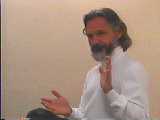 |
|||||||||||
 |
|||||||||||
 |
|||||||||||
 |
|||||||||||
 |
|||||||||||
 |
|||||||||||
 |
|||||||||||
 |
|||||||||||
 |
|||||||||||
 |
|
|
|
|
||||||||||||||||||||||||
|
Lessons and Implications for Teaching
The results of this project suggest that developing deep understanding is a hard fought, long term process. The findings raise questions about the nature of understanding and questions about how teaching can promote the kind of deep understanding that enables students to use knowledge intelligently in new situations.
Rudimentary and deep understandings Throughout the semester students talked and wrote about the course material quite sensibly. For example, students read a book about learning that introduced important concepts such as thinking dispositions, metacognition, learning strategies, higher order knowledge and transfer of learning. Most students could explain these concepts adequately and give examples of them. Taken at face value, they seemed to grasp what they were talking about. I believe that this "sensible thinking about" is evidence of incipient or rudimentary understanding. When students apprehend some of the connections among ideas, they have some degree of understanding of a topic. But assessments of students' ability to "think with" the subject matter indicated only modest progress during the semester. Thus, the development of rudimentary understanding enabled students to define and explain some psychological principles (i.e., think about the principles), but not apply those same concepts to a problem situation (i.e., think with the principles). Thinking with psychological principles may depend upon a deeper understanding and a more comprehensive grasp of the relations among a set of ideas—radical restructuring that produces a sensible new model of learning. (more on rudimentary and deep understandings) Beyond active learning In order to get beyond rudimentary understandings, I believe that teaching approaches must engage students in more radical restructuring of their knowledge. But even many problem-based and active learning approaches may not engage students in this kind of knowledge restructuring. For instance, cooperative learning ostensibly engages students more actively in the subject matter. By working with classmates, students are exposed to alternative perspectives about a topic. But, exposure to alternative views may not persuade students that their own ideas need to be modified. As research on intellectual development indicates, college students may simply accept alternative views as matters of opinion and conclude that they are equally valid—no better or worse than their own.
Similarly, when engaging in problem-based learning, the problem solving process can actually reinforce students' pre-existing beliefs rather than foster conceptual development. For example, my students believe that self esteem produces high academic achievement and that teachers should boost self esteem directly to "make kids feel good about themselves." They are likely to use their self esteem model wherever they can to interpret and solve classroom learning problems.
Thus, in this view, deep understanding develops as a consequence of testing and revising one's understanding and not simply by actively engaging a problem. Students need to test and retest the hypotheses that reflect their basic models and beliefs about the topic. The instructional challenge is to create a process that gets students beyond their personal models, to incorporate disciplinary ideas in the interpretation, analysis and solution of problems.
In my example, rather than try to persuade students that they misunderstand self esteem, I introduce conflicting information into problem situations. For instance, in one problem my students study profiles of several children and propose goals and strategies to improve their academic performance. In the early stage of the problem, they ask questions based on their hunches and suspicions about the children's situations. Students often inquire about the children's self esteem, at which point I indicate that self esteem is not a problem. This information contradicts their line of thinking, and they need to consider alternative hypotheses. But to make this kind of teaching possible, the instructor needs to know what kinds of models students bring to the learning experience and how students are likely to interpret new problems. Thus, in addition to understanding the subject matter, instructors have to understand the sources of students' personal misunderstandings. Correspondingly, my future efforts with the PBL approach will focus on how to engage students more effectively in testing and revising their personal models of teaching and learning—the kind of activity that may lead to radical restructuring of their thinking and deep understanding.
Understanding beyond the course Given this view of understanding, it may be unreasonable to expect radical restructuring in students' fundamental beliefs about teaching and learning in the span of a single course. Perhaps the developmental trajectories for some major ideas—those that form models or theoretical perspectives—transcend a single class or semester. If this is so, then individual courses may not produce deep understanding of important concepts or significant changes in student' models. In our individual classes, we may start students in the right direction, but they may not achieve radical restructuring of core concepts.
If individual courses have only a weak or temporary effect on understanding, where does that leave us? It seems to me that the problem of developing deep understanding in students is not a single instructor's problem so much as a corporate problem for faculty in an academic program. Deep understanding ought to be viewed as a developmental process that involves significant knowledge restructuring during the entire undergraduate experience. Faculty need to identify what students should understand as a result of studying for several years in a program and create a coordinated effort to support the development of understanding across and throughout the curriculum. What I am proposing is not the same as sequencing a curriculum so that instructors cover topics in a prescribed order—that already exists. Instead, I suggest that instructors determine how to support the development of students' understanding programmatically.
|